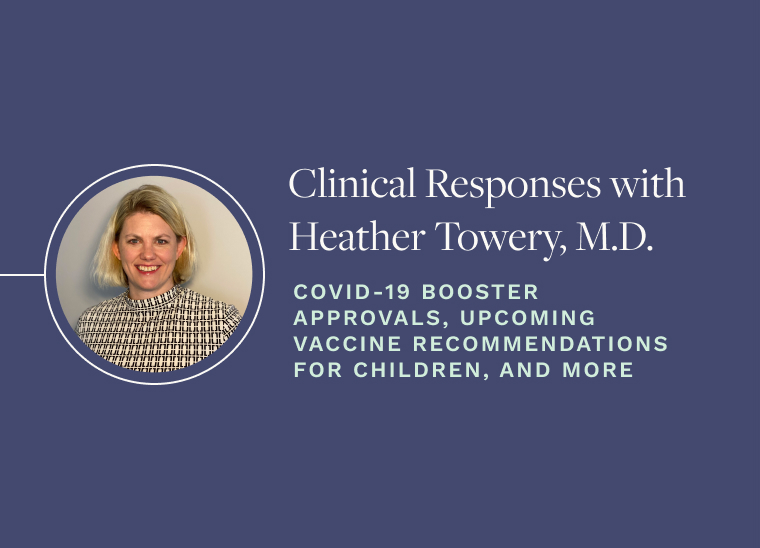It’s been a busy week regarding COVID-19 boosters. As of October 21, the FDA and the CDC have approved Moderna and Johnson & Johnson booster doses for various populations as well as mixing and matching of vaccines. Here is a summary of the current booster guidelines and the populations currently eligible for them:
Pfizer-BioNTech
Dose: Same as the initial dose
Timing: 6 months after 2nd dose
Eligibility: People who are:
- 65 years and older and residents in long-term care settings
- 50 – 64 years old with underlying medical conditions
- 18 – 49 years old with underlying medical conditions based on their individual benefits and risks
- 18 – 64 years old who are at increased risk for COVID-19 exposure and transmission because of occupational risk or institutional setting based on their individual benefits and risks
Moderna
Dose: Half the initial dose (the lower dose triggers fewer side effects while still providing excellent immunity levels)
Timing: 6 months after 2nd dose
Eligibility: People who are:
- 65 years and older and residents in long-term care settings
- 50 – 64 years old with underlying medical conditions
- 18 – 49 years old with underlying medical conditions based on their individual benefits and risks
- 18 – 64 years who are at increased risk for COVID-19 exposure and transmission because of occupational risk or institutional setting based on their individual benefits and risks
Johnson & Johnson
Dose: Same as the initial dose
Timing: 2 months after 1st dose
Eligibility: All adults ages 18+
What are the side effects like for COVID-19 boosters?
According to the trial data, side effects have been reported to be similar but less severe than the second dose of the Moderna and Pfizer vaccines. For those interested in receiving both the flu and booster doses together, the side effects should be similar to receiving the booster alone. We recommend all employers plan for allowing some recovery time for those eligible for booster doses.
What about mix and match boosters?
While it is generally recommended that you receive your booster shot from the same manufacturer as your initial vaccine series, mixing and matching of vaccines for the booster has been approved. In particular, it is recommended that those who received a Johnson & Johnson first dose receive a Moderna and Pfizer mRNA booster. Studies show a demonstrated improvement in antibody response when an mRNA vaccine follows an adenovirus vectored vaccine such as Johnson & Johnson’s COVID-19 vaccine. It also enables individuals who may have better access to one vaccine manufacturer over another to get their booster on time.
Vaccines for Children
The FDA advisory panel met on October 26 to hear data about the Pfizer-BioNTech vaccine’s safety and efficacy for children ages 5 to 11 and make recommendations to regulators. The CDC is scheduled to meet on November 2 and November 3 to review the advisory committee’s findings and make a final recommendation for the vaccine’s use in children.
Several states have started pre-ordering Pfizer-BioTech vaccine doses for children ages 5 to 11 in the hopes of being able to start vaccinating soon after the CDC approval. We will keep you updated as we hear more.
Eden Health is here to keep you up-to-date and answer your questions about the evolving pandemic. To learn more about our COVID-19 solutions, contact us today.
Authored by Heather Towery, M.D., VP Clinical Strategy and Enterprise Partnerships at Eden Health
Disclaimer: This information is based on current resources available and is subject to change. This document and its contents are provided for informational purposes only, and not intended to be, and should not be understood or treated as, a substitute for professional medical advice around COVID-19, its risks or symptoms, or to take the place of any local, state and national laws and guidelines around COVID-19. Always seek the advice of a physician or other qualified health provider with any questions you may have regarding a medical condition.





